Malaysia offers holidaymakers a textured adventure, in which gleaming skyscrapers stand alongside colonial buildings, and verdant rainforests stretch all the way down to pristine beaches. Visitors come to play, to unwind, to connect with nature, and to ride the energy of a titan among Southeast Asian cities: Kuala Lumpur.On the cultural side, tourists are exposed to some of the region's most well-known peoples and some of its rarer groups. Every one of them has imprinted on the place, adding new notes to its character. Jungle walks, ancient caves, stunning mosques, isolated villages and the world's most diverse marine ecosystem are part of the experience.All in all, the destination's attractions celebrate Asia's history, and some of its best features.
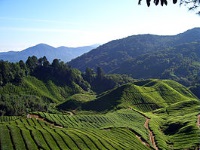
Located at the northwestern edge of Pahang state, the Cameron Highlands hill station is the largest of its kind in Malaysia. The fertile region is home to a scattering of villages, and terraced plantations. Visitors will enjoy the scenic drive along the area's main route, during which they can stop at the stunning Lata Iskandar Waterfalls and Kuala Woh Forest Recreation Park. They can also stroll through Brinchang's market square, potter around handicraft stores, or sample the peace at Buddhist Temples. Ringlet and Tanah Rata are also worth exploring for lovers of quaint towns. Trips to tea plantations and strawberry farms are popular too.
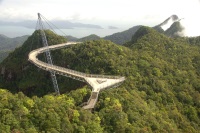
Langkawi is the collective name for a group of 99 tropical islands located 20 miles (30km) off the northwestern tip of the peninsula. Pulau Langkawi is the largest and most developed of them. Much of the island's prolific development has been focused in the town of Kuah, which is the embarkation point for visitors travelling by ferry. Pulau's appeal flows from its hot springs, waterfalls, pristine beaches, limestone outcrops and stunning mountainous interiors. Visitors will also find plenty of shops and modern amenities. Langkawi is easily accessible by air or boat, though ferry crossings may cease during the monsoon season.
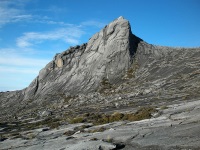
Mount Kinabalu rises from the Kinabalu National Park. At an impressive 13,500-foot (4,101m), it's one of the highest peaks in Southeast Asia. It's a relatively easy climb, though, with tourists of varying ages and fitness levels enjoying the two-to-three-day ascent. Most people spend a night at Laban Rata before mounting the summit. Along with being the name of a resthouse that caters for hikers, Laban Rata is the name most people use for the area. The summit is a three-to-four-hour hike away from the hostel. Hikers should leave between 2am and 3am if they want to catch one of the area's magical sunrises. Visitors will encounter some weird and wonderful vegetation as the scale the jungle route, and can expect some astounding views from the top. Hikers should note that while the climb doesn't require any special equipment or technical skills, some people may experience the dizziness and shortness of breath associated with altitude sickness. All in all, climbing Mount Kinabalu is an extremely rewarding adventure and one of the top activities in Malaysia.
Address : Mount Kinabalu, Ranau, Sabah
Website : www.sabahparks.org
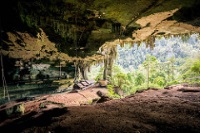
The Great Cave of Niah is one of the largest limestone caves in the world. More importantly, it's where archaeologists discovered evidence of man's existence dating back 40,000 years. A display of tools, rock paintings and human skulls tell the story of ancient civilisations. Limestone and lush tropical vegetation dominate the rest of the park, which nestles beneath the magnificent Mount Subis. Visitors reach the caves via a motor-boat trip across a small crocodile-infested river and a one-hour-long trek through jungle. The walk is rewarding and may include some wildlife viewing. As for the cave, travellers should expect slippery conditions, and should pack a flashlight. The area's ancient rock paintings are a must-see.
Address : 98200 Niah, Sarawak
Website : www.forestry.sarawak.gov.my
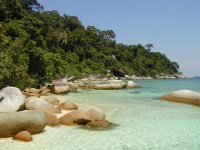
Two islands make up the popular holiday destination, which for all intents and purposes is a backpacker's paradise. Fisherman double as tour guides, and simple beach bars spill out onto the pristine shore. Travellers have the option of securing more high-end accommodation if they want, though the islands are an iconic stop on the budget traveller's itinerary. Regarding activities, the largely undeveloped region is located within the Terengganu Marine Park, where divers and snorkelers can enjoy clean water and gorgeous coral reefs. Visitors can reach the islands via taxi boats from the town of Kuala Besut. They should also note that the east-coast monsoon often makes the islands inaccessible between November and January.
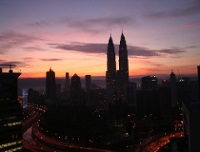
The Petronas Towers were designed to capture Malaysia's emergence as Southeast Asia's cultural and commercial centre. Celebrated as the world's tallest twin towers, they dominate the city skyline. Architects followed the traditional geometric principles of Islamic architecture when designing the buildings, using modern technology to stunning effect. Joined by a skybridge on the 41st floor, the towers are used as office complexes that form part of the Kuala Lumpur City Centre Development Park. They're particularly beautiful when lit up at night. Tours include crossing the famous bridge and going up to an observation deck on the 86nd floor, which offers phenomenal, 360-degree views of the city. Visitors can also enjoy an exhibition detailing the development of the towers, and purchase souvenirs at a gift shop.
Address : City centre. Ticket Booth: Tower 2, Concourse Level
Website : www.petronastwintowers.com.my
Transport : Train from Kuala Lumpur Central Station or PUTRA light rail transit to KLCC; bus 176,178,183 or 185 from Jalan Hang Lekiu bus stop
Opening times : The towers are open to the public Tuesday to Sunday 9am to 9pm (closed from 1pm – 2.30pm on Fridays), but tickets go on sale at 8.30am.
Admission : MYR 80 (adults), MYR 33 (children).
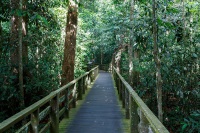
Sabah District's vast, enchanting equatorial rainforest is home to the Sepilok Orangutan Sanctuary, where orphaned orangutans find temporary shelter and rehabilitation before their re-release into the forest. The centre was set up in 1964 and gives tourists and researchers the priceless opportunity to observe and engage with the animals in their natural habitat. Visitors are restricted to the walkways but orangutans often come over to interact. Photography is permitted, though tourists will pay an extra charge for bringing in a camera. The Sandakan Rainforest Discovery Centre (RDC) is also within the Sepilok Forest Reserve. The remarkable place allows guests to explore the jungle canopy on a series of raised platforms and walkways. Nature lovers in general, and bird watchers in particular will enjoy the experience.
Address : Sabah Wildlife Department, W.D.T. 200, Sandakan, Jalan Sepilok, Sepilok, 90000 Sandakan, Sabah
Website : www.sabahtourism.com
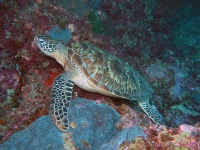
This mushroom-shaped island is known among divers around the world for its unique seascape and exceptional beauty. Something like 3,000 varieties of fish, hundreds of coral species, and numerous rays, sharks and turtles populate its translucent waters. Sipadan Island certainly tops the Malaysian itinerary for serious scuba divers, given that it's located in the world's most bio-diverse marine habitat. The famous underwater explorer Jacques Cousteau once described it as 'an untouched piece of art'. Indeed, the Malaysian government has taken measures to preserve the fragile ecosystem. That is, it's ordered dive resorts off the island, limited the daily number of divers allowed in the water, and banned night dives.
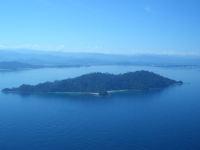
Five pristine islands make up Tunku Abdul Rahman National Park, with each idyllic setting comprising white beaches, offshore coral reefs and inland forests teeming with animal life. These destinations are all perfect for camping, trekking, swimming and snorkelling. Gaya Island is the largest of the five. Its status as a forest reserve since 1923 has helped preserve its dense tropical forest. Manukan Island is the second largest and the most popular with Malaysian locals. Mamutik Island is the smallest, though it still has its share of loveliness. Travellers seeking tranquillity will love this beautiful retreat. Sapi Island is very popular with foreign tourists and can get quite crowded during the day. Lastly, Sulug Island is the most pristine and untouched of the chain, and the farthest from the mainland. It is the ideal destination for those seeking peace and quiet.
Address : Sabah, Malaysia
Website : www.sabahparks.org.my

Travel Guide powered by Word Travels, copyright © 2023 Globe Media Ltd. By its very nature information in this travel guide is subject to change at short notice and travellers are urged to verify information on which they're relying with the relevant authorities. Neither Globe Media Ltd nor Travel Vogue can accept any responsibility for any loss or inconvenience to any person as a result of information contained above.